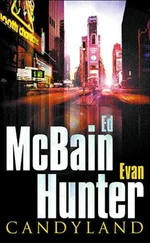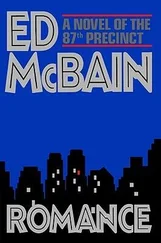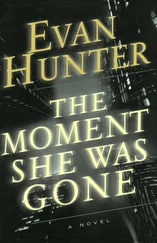“Imputing a motive to defendant does not prove that she had it. I understand the counsel for the Government to claim that defendant had toward her stepmother a strong feeling of ill will, nearly if not quite amounting to hatred. And Mrs. Gifford’s testimony as to a conversation with defendant in the early spring of 1892 is relied upon largely as a basis for that claim, supplemented by whatever evidence there is as to defendant’s conduct toward her stepmother.
“But take Mrs. Gifford’s just as she gave it, and consider whether or not it will fairly amount to the significance attached to it, remembering that it is the language of a young woman and not of a philosopher or a jurist. What you wish, of course, is a true conception — a true conception of the state of the mind of the defendant toward her stepmother, not years ago, but later and nearer the time of the homicides. And to get such a true conception, you must not separate Mrs. Gifford’s testimony from all the rest but consider also the evidence as to how they lived in the family.
“Whether, as Mrs. Raymond, I believe, said, they sewed together on each other’s dresses; whether they went to church together, sat together, returned together; in a word, the general tenor of their life. Weigh carefully all the testimony on the subject in connection with the suggestions of counsel, and then judge whether or not there is clearly proved such a permanent state of mind on the part of defendant toward her stepmother as to justify you in drawing against her, upon that ground, inferences unfavorable to her innocence.
“Now, gentlemen, the material charge in the first count of the indictment is that, at Fall River, in this county, the defendant killed Mrs. Borden, by striking, cutting, beating and bruising her on the head with some sharp cutting instrument. In the second count the same charges are made in regard to Mr. Borden. And the government claims that these acts were done with deliberately premeditated malice aforethought, and so were acts of murder in the first degree.
“Now you observe, gentlemen, that the Government submits this case to you upon circumstantial evidence. No witness testifies to seeing the defendant in the act of doing the crime charged, but the Government seeks to establish by proof a body of facts and circumstances from which you are asked to infer or conclude that the defendant killed Mr. and Mrs. Borden. This is a legal and not unusual way of proving a criminal case, and it is clearly competent for a jury to find a person guilty of murder upon circumstantial evidence alone. The principle that underlies circumstantial evidence, we are constantly acting on in our business; namely, the inferring of one fact from other facts proved.
“Sometimes the inference is direct, and almost certain. For instance, the noise of a pistol is heard from a certain room in a hotel. The door is unlocked or otherwise opened. A man is found, just dead, with a bullet hole in his temple. Near him is a revolver with one barrel discharged. In such a case, if no contradictory or controlling facts appeared, we should infer — with a very strong assurance — that the death was caused by the pistol. In other cases the facts from which the conclusion is sought to be drawn are numerous and complicated, and the conclusion not so closely connected with the facts or so easy to draw.
“This is illustrated by the case on trial here. You have got to go through a long and careful investigation to ascertain what facts are proved. Then, after you have determined what specific facts are proved, you have remaining the important duty of deciding whether or not you are justified in drawing, and will draw, from these facts the conclusion of guilt.
“Now let me illustrate. Take an essential fact. All would admit that the necessity of establishing the presence of the defendant in the house, when, for instance, her father was killed, is a necessary fact. The Government could not expect that you would find her guilty of the murder of her father by her own hand unless you are satisfied that she was where he was when he was murdered. And if the evidence left you in reasonable doubt as to that fact — so vital, so absolutely essential — the Government must fail of its case, whatever may be the force and significance of other facts; that is, so far as it is claimed that she did the murder with her own hands.
“Now, take the instance of a helpful fact. The question of the relation of this handleless hatchet to the murder. It may have an important bearing upon the case, upon your judgment of the relations of the defendant to these crimes — whether the crime was done by that particular hatchet or not — but it cannot be said, and is not claimed by the Government that it bears the same essential and necessary relation to the case that the matter of her presence in the house does. It is not claimed by the Government but what that killing might have been done with some other instrument.
“Take another illustration. I understand the Government to claim substantially that the alleged fact that the defendant made a false statement in regard to her stepmother’s having received a note or letter that morning bears an essential relation to the case, bears to it the relation of an essential fact, not merely the relation of a useful fact. Now what are the grounds on which the Government claims that that charge is false, knowingly false?
“There are three, as I understand them: one, that the man who wrote it has not been found; second, that the party who brought it has not been found; and third, that no letter has been found. And substantially, if I understand the position correctly, upon those three grounds you are asked to find that an essential fact — a deliberate falsehood on the part of the defendant has been established.
“Now what answer or reply is made to this charge? First, that the defendant had time to think of it; she was not put in a position upon the evidence where she was compelled to make that statement without any opportunity for reflection. If, as the Government claims, she had killed her stepmother some little time before, she had a period in which she could turn over the matter in her mind. She must naturally anticipate, if she knew the facts, that the question at no remote period would be asked her where Mrs. Borden was, or if she knew where she was. She might reasonably and naturally expect that that question would arise.
“Again, it will be urged in her behalf, what motive had she to invent a story like this? What motive ? Would it not have answered every purpose to have her say — and would it not have been more natural for her to say — simply that her stepmother had gone out on an errand or to make a call? What motive had she to take upon herself the responsibility of giving utterance to this distinct and independent fact of a letter or note received with which she might be confronted and which might afterwards find it difficult to explain, if she knew that no such thing was true? Was it a natural thing to say — situated as they were, living as they did, taking the general tenor of their ordinary life — was it a natural thing for her to invent?
“Now gentlemen, you know that I am expressing no opinion as to what is proved. I am only trying to illustrate principles and rules of law and evidence. Referring to the present case let me use this illustration: suppose you were clearly satisfied upon the testimony that if defendant committed the homicides she could by no reasonable possibility have done so without receiving upon her person and clothing a considerable amount of bloodstain; that when Bridget Sullivan came to her upon call and not long after some of the other women, she had no bloodstains upon her person or clothing; that she had had no sufficient opportunity either to remove the stain from her person or clothing, or to change her clothing.
Читать дальше












